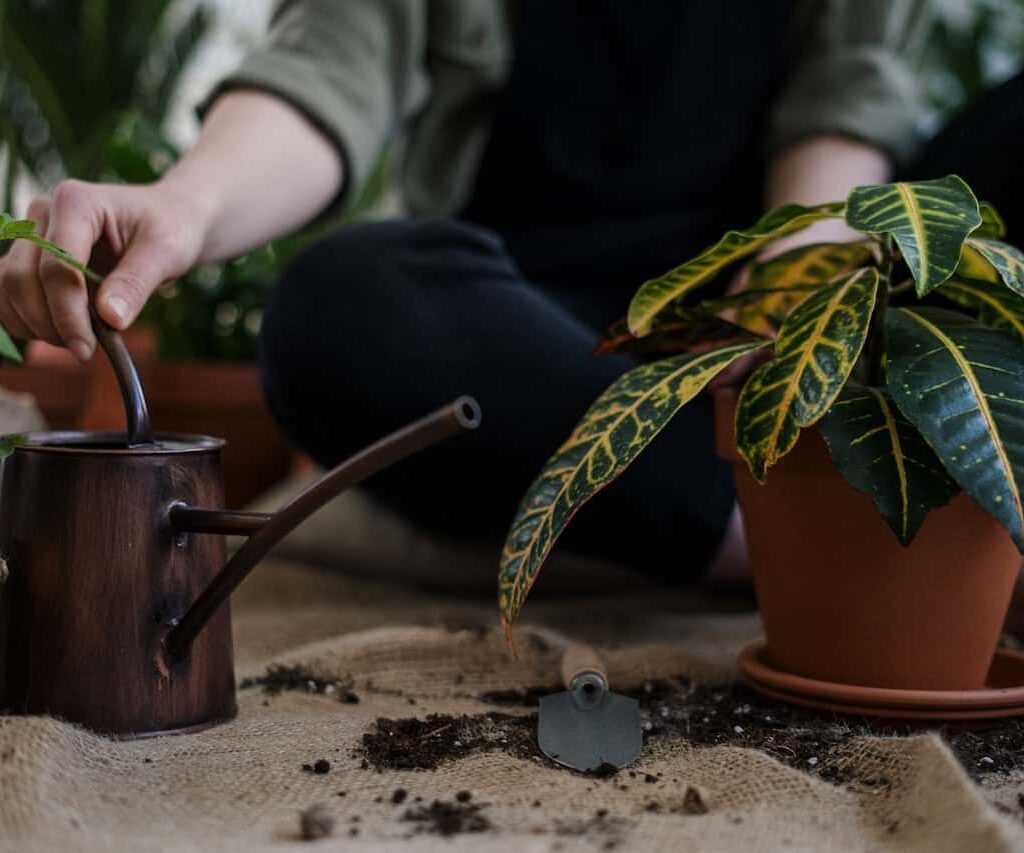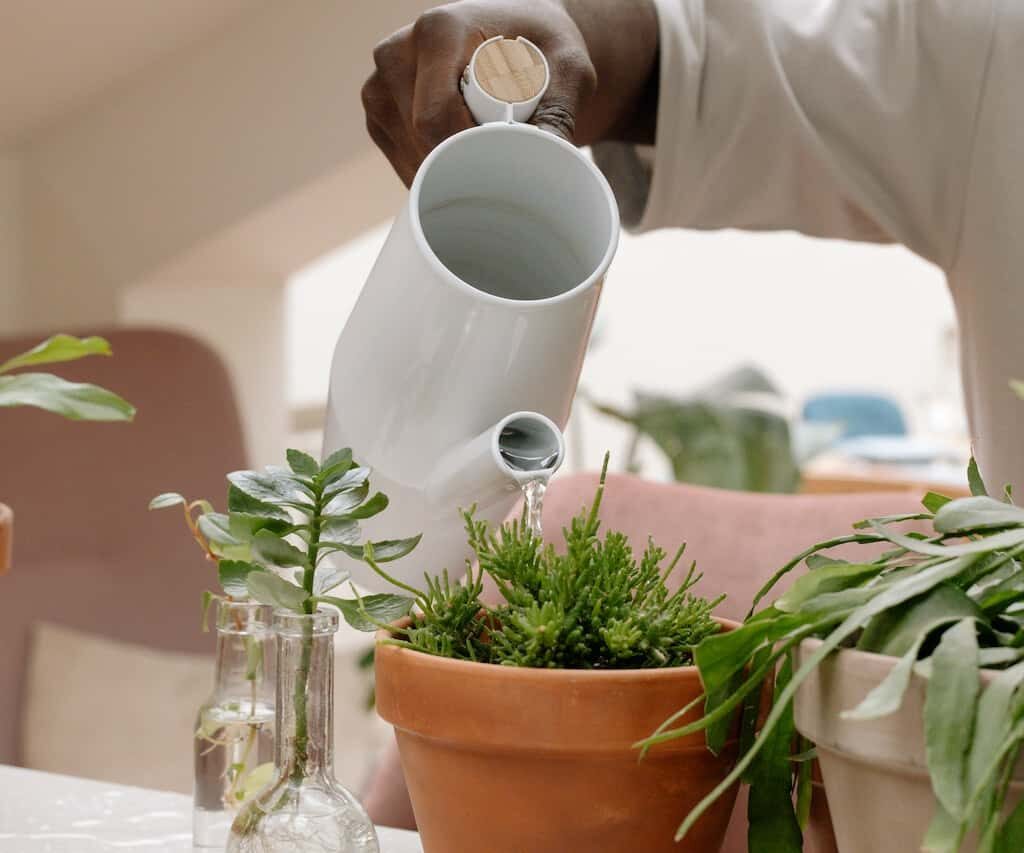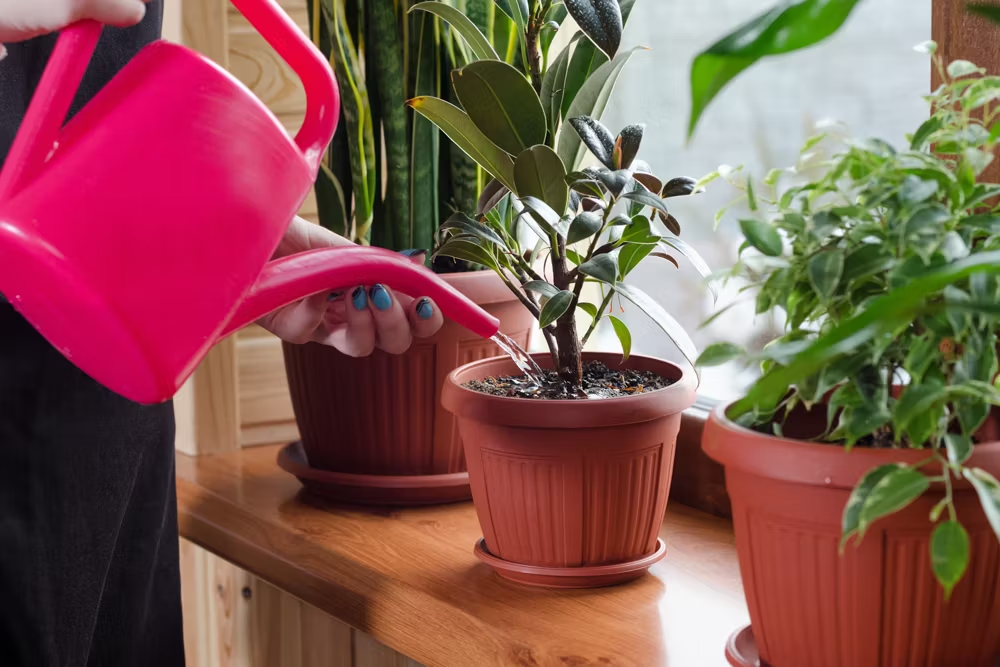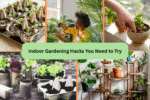Watering might seem like the simplest part of plant care — pour water into the pot and you’re done, right? Not quite! In fact, improper watering is one of the most common reasons indoor plants struggle or die. Too much or too little water can harm roots, cause yellowing leaves, and invite pests or diseases.
If you’re determined to keep your indoor potted plants healthy and vibrant, mastering the art of proper watering is essential. This detailed guide will walk you through smart, practical watering tips for indoor plants, helping you avoid common mistakes and create the perfect care routine.
Why Proper Watering Matters

Water plays a vital role in plant health — transporting nutrients, maintaining cell structure, and supporting photosynthesis. But each plant has unique water requirements based on its type, size, pot material, and environmental conditions.
Overwatering leads to root rot and fungal diseases, while underwatering causes leaves to wilt, dry, or turn brown. Learning how and when to water is the key to lush, thriving plants.
How to Know When Your Indoor Plants Need Water

Different plants have different needs, but these simple methods can help you check soil moisture before watering:
Finger Test
Insert your finger about an inch deep into the soil.
- If it feels dry, it’s time to water.
- If it’s moist, wait a day or two.
Wooden Skewer or Chopstick Test
Insert a wooden skewer into the soil and pull it out.
- If it comes out clean and dry, your plant needs water.
- If it has damp soil sticking to it, hold off.
Weight Test
Lift your pot slightly:
- Lightweight = dry soil.
- Heavy = moisture still present.
Golden Rules for Watering Indoor Potted Plants

Follow these fundamental guidelines to get watering right every time:
Water Thoroughly but Infrequently
When you water, do it deeply so that water reaches the entire root system and drains out from the bottom. Avoid shallow watering, which only moistens the surface.
Why it’s important:
Deep watering encourages roots to grow deeper and stronger, making plants more resilient.
Use Room-Temperature Water
Cold water can shock plant roots, while hot water may damage them. Always use room-temperature water for indoor plants.
Avoid Leaving Water in the Saucer
After watering, allow excess water to drain completely.
Empty saucers after 15–20 minutes to prevent root rot from standing water.
Adjust Watering Based on Seasons
Most indoor plants grow actively in spring and summer, needing more water.
During autumn and winter, plant growth slows, so reduce watering frequency to avoid soggy soil.
Know Your Plant’s Specific Needs
Different indoor plants have unique watering preferences:
- Succulents and cacti: Water only when soil is completely dry.
- Ferns and tropical plants: Prefer consistently moist (not soggy) soil.
- Orchids: Like to dry out slightly between waterings.
Best Time of Day to Water Indoor Plants

The ideal time to water is early morning or late afternoon.
Avoid watering late at night, as cooler evening temperatures can cause water to sit in the soil, promoting fungal growth and root rot.
Factors That Affect Watering Frequency
Several elements influence how often you should water your indoor plants:
Plant Type
Succulents, snake plants, and ZZ plants need less frequent watering.
Tropical plants like peace lilies and calatheas prefer consistently moist soil.
Pot Size
Smaller pots dry out faster than larger ones, requiring more frequent watering.
Pot Material
- Clay or terracotta pots allow moisture to evaporate quickly.
- Plastic or glazed pots retain moisture longer.
Room Temperature and Humidity
Warm, dry air speeds up soil drying. Use a humidifier or pebble tray for moisture-loving plants in dry climates.
Indoor Plant Watering Techniques

Choose a watering method based on your plant’s preferences and pot size:
Top Watering
The most common method. Pour water slowly into the soil until it drains from the bottom.
Tip: Avoid wetting the leaves to reduce the risk of fungal diseases.
Bottom Watering
Place your pot in a shallow tray of water. The soil will absorb moisture through the drainage holes.
Ideal for: African violets, ferns, and small potted plants.
Misting
Use a fine mist spray to increase humidity around tropical plants.
Note: Misting alone isn’t a substitute for watering the soil.
Self-Watering Systems
Use self-watering pots, globes, or spikes for low-maintenance care. These slowly release water as the soil dries out.
How to Prevent Overwatering
Overwatering is one of the quickest ways to harm indoor plants. Here’s how to avoid it:
- Always check soil moisture first.
- Use pots with drainage holes.
- Allow the soil’s top layer to dry out between waterings (except for moisture-loving plants).
- Water less frequently during cooler months.
- Avoid watering on a fixed schedule — let your plant’s needs guide you.
Signs of Overwatering and Underwatering
Knowing the difference helps you adjust your care routine promptly.
| Symptom | Overwatering | Underwatering |
|---|---|---|
| Leaf color | Yellow, soft, or wilting | Brown, crispy, curling edges |
| Soil | Consistently wet or soggy | Dry, cracked, pulls away from pot sides |
| Leaf drop | Sudden leaf fall | Dry, brittle leaves falling off |
| Root condition (if checked) | Mushy, brown, foul-smelling roots | Dry, brittle roots |
Extra Indoor Plant Watering Tips
- Use filtered or rainwater if your tap water is hard or chemically treated.
- For orchids and air plants, soak roots or leaves in water for 15–20 minutes.
- Group humidity-loving plants together to create a natural, moist microclimate.
- Always water evenly around the plant’s base.
- Clean and disinfect watering cans regularly to prevent mold and algae.
Final Thoughts
Watering your indoor potted plants is both an art and a science. It’s about reading the signs, feeling the soil, and understanding your plant’s natural rhythm. With these simple yet effective tips, you can confidently care for your plants, avoid common watering mistakes, and enjoy a home filled with thriving greenery.
Remember — when in doubt, it’s often better to underwater than overwater. Most houseplants are far more forgiving of a missed drink than sitting in soggy soil.
Happy watering, and may your indoor garden flourish!





Leave A Comment